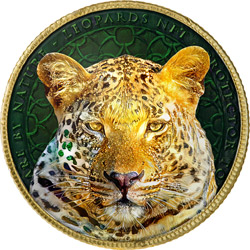After 241 Weeks in Pictures, I’ve realised more and more how futile it is to attempt to sum up the week in only 15-20 photographs, especially as most of these posts are comprised of only one or two photographers’ pictures. Even if every guide at Londolozi submitted 15-20 pictures each week, and this post featured over 100 photographs (which wouldn’t be hard to do, believe me!), it still couldn’t do the week justice.
So many subtleties define the day to day activities in the bush here, and each game drive or excursion into the field is so full of a variety of sights, sounds and smells, that to try and convey what we see through a simple 2D medium is well nigh impossible.
It’s akin to quickly opening and closing the curtains to let you look inside the room a big event is being held in. You can get an idea of the amount of colour, the number of people, the pageantry and maybe the scale of what’s going on, but to truly appreciate it, the only thing to really do is to step inside.
Nevertheless, a sneak peek is better than nothing, so without further ado, enjoy this Week in Pictures…

The Nanga female in a marula tree at the close of day. Whilst the tendency can be to zoom right in for a close-up of the leopard, zooming out is often more effective in telling the story, and a simple portrait of a leopard in this case would not be the story. f/8, 1/60s, ISO 400. Photograph by Sean Cresswell

A herd of elephants drink from Rhino Dam. This waterhole is relatively small, and with a 70-200mm lens it was impossible to get all the elephants in on frame, so this photo was actually a composite of four. f4, 1/250s, ISO 2000

A very young elephant calf marches away from what was quite possibly its first ever mud bath. f5.6, 1/800s, ISO 250. Photograph by Sean Cresswell.

A red-billed oxpecker alights from the hide of a hippo carcass while a white-backed vulture watches form the background. Photograph by Don Heyneke

Those of you who follow the Londolozi Instagram feed will recognise this scene. Varty Camp manager Will Ford never lets guests down, and recently when a visiting family wanted to see a leopard in a tree but hadn’t yet found one, Will decided to go one up on their request and place a lion in a tree instead… f3.2, 1/800s, ISO 800

The big leadwood tree in the south east of the reserve has its resident tree squirrel family, and the cold mornings offer great photographic opportunities; the sky at this time of year is generally clear, and in the cold weather the squirrels emerge to sun themselves as the temperature rises. f5.6, 1/4000s, ISO 640

The resident ostrich – who in the past ten days has nearly been caught by both the Mhangeni sub-adult lions and the Makhotini male leopard – has relaxed far more around vehicles than she was when she first arrived a few years ago, allowing us closer to capture what until recently were unheard of photographic opportunities. f6.3, 1/3200, ISO 500

Tracker Mike Sithole and guide Nick Kleer turn to face the camera whilst waiting for the Nhlanguleni female to descend a marula tree. I feel a bit bad about this one, as they had been waiting for a good 20 minutes for the leopard to move. Just as I called them in order to take this photo, they turned to look, she came down, Nick missed the shot… Sorry guys! f.5, 1/2000s, ISO 320

The Mashaba female looks up from feeding on her impala kill in the dawn light. This was a fantastic sighting, for the simple reason that she and her cub had been reunited after a long hiatus. Look out for an update on this pair next week. f3.2, 1/1250s, ISO 640

The Makhotini male leopard walks away from the Ostrich, who he had just chased for the fourth time on this morning. f7.1, 1/1600s, ISO 640

A young elephant revels in the water of one of the few pans with water in them at the moment. f3.5, 1/6400s, ISO 800

An elephant calf turns to face us on the bank of the Sand River. Young elephants like this often put on a show of false bravado before scurrying away to hide behind their mothers. f4.5, 1/500s, ISO 800

The 4:4 male is one you need a long lens to get good photographs of, as he so rarely allows vehicles close to him. On this occasion we were hanging well back to try and photograph him in his surroundings, and he obliged by scent marking along the edge of the Maxabene Riverbed. f3.2, 1/800s, ISO 640

The sun sets on another day in the bush; gin and tonics, snacks, and the Matimba males roaring in the distance. It doesn’t really get better than this. f3.5, 1/2500s, ISO 800
All photographs by James Tyrrell unless otherwise stated.


























Fabulous images. Wish I had been them to share them. Londolozi holds such a very special place in our memories.
Agree that it’s impossible to capture the drama that unfolds daily. Having said that, for those who have experienced it firsthand, the week in pictures along with each and every blog post, go a good distance to maintaining our connection to this special place. Keep ’em coming. (Great shot of that baby elephant’s first mud bath, Sean.)
The big long line of elephants???
So glad Ophelia the ostrich lives to be stupid another day. I have a lovely picture of her inner throat- so close did she approach in an apparent attempt to choose one of us in the vehicle as a suitable mate!
So true. I relish the daily connection with my favorite place in the world. Aloha.
Great pictures James, and I love the close-up of the lioness paw! I think the elephants are looking very thin…I guess the lack of rain is really making it difficult to get enough nutrition? Thank you for a great week in pictures and keeping us connected from afar!
Love the blogs! the lion in the tree was priceless!! LOL
Thanks, Cameron!